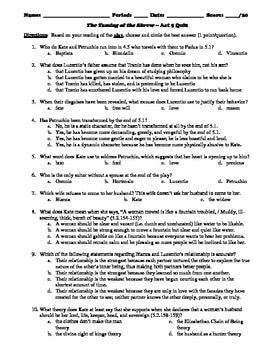
Past papers ACT subject test English 1
The ACT English section contains 45 multiple-choice questions. These questions test students’ ability to recognize grammatical and stylistic errors in written English. They are also designed to measure the impact of revisions to a passage on a reader’s understanding of the material. Here’s a review of the ACT’s English section. Use this guide to prepare for the exam! Here are some tips to ensure a successful test day!(Past papers ACT subject test English 1)

ACT English section contains 45 multiple-choice questions
The ACT English section consists of 75 multiple-choice questions, arranged around five reading passages. The questions are timed so that each student has 36 seconds to answer each question. The test measures students’ knowledge of the conventions of the English language, including grammar, punctuation, and style. The English section is the first section of the test. The questions are grouped into three assessment areas: grammar, usage, and rhetorical skills.(Past papers ACT subject test English 1)
ACT English also tests your ability to analyze and evaluate different viewpoints and hypotheses. Some questions require you to choose the correct answer based on context. For example, if a passage has two opposing viewpoints, you would have to choose the one that supports your opinion. Then, you would have to compare their similarities and differences. You will also have to write one essay for the ACT, which will take you forty minutes to complete.
ACT English is divided into five sections. The first section is for students taking the exam in English. It contains 45 multiple-choice questions. Depending on the level of your English proficiency, the exam may consist of one or more essays. Each essay has multiple-choice questions. The questions can test your ability to comprehend a passage and apply grammar rules. It also tests your ability to apply punctuation and sentence construction.
ACT tests students’ ability to identify grammatical and stylistic errors in written English
The ACT English test assesses your ability to pick the correct word and spot stylistic and grammatical errors. These questions also measure your ability to analyze the writing style of a famous author. This topic is extensive enough to warrant a separate article, but here are some tips to improve your score. You’ll need to know the four C’s of good writing: conciseness, clarity, and context.
Identifying grammatical and stylistic errors in the written English is the most critical section of the ACT. This is one of the first sections of the test, and students may find it difficult to get into the testing mood when they arrive. However, you can take a few minutes to warm up. Practice makes perfect. Practice makes perfect, and ACT English tutors are here to help you master this skill.(Past papers ACT subject test English 1)
The ACT’s English section assesses several areas of writing. It includes five passages with errors, which students must analyze and fix as editors. In addition, you’ll also be tested on conventions of standard English grammar, usage, and mechanics. Other sections measure your comprehension of the purpose and focus of writing. You’ll also need to know what the ACT’s scoring scale means before you take the exam.
ACT tests students’ ability to gauge the effect of revisions to a passage on a reader’s understanding of the material
The ACT is a standard standardized test given in the United States. Test subjects include two math tests, Number Series, and Definitions. There are also seven verbal tests, which focus on the areas of Classification, Analogies, Logical Inference, Paragraph Reading, and Antonyms. Each test includes approximately the same amount of time for the same topics. Students may take the ACT once in their lifetime, although it is not recommended.
In multiple-day examinations, a student must complete at least one section on the first day. If a student leaves early and is unable to finish the test on the second day, they may receive a photocopy of the completed sections. These photocopies may not contain any changes in the student’s responses, or may not contain the sections a student hasn’t completed on the first day.
Revisions can have a drastic impact on a reader’s understanding of the passage. For example, Amaya, a student with a learning disability, is in the fifth grade. She has been making slow progress since kindergarten. Her teacher has provided her with braille instruction, but she isn’t yet proficient. Ben’s blindness was the result of an accident over the summer. Because of this, he needs auditory accommodations to comprehend print.

Comments (0)